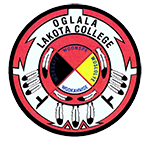Costs in the 2022-23 year
Estimated Cost of Attendance
$15,438 / yr
| Tuition and fees | $ | 2,588 |
| Housing and meals | 7,200 |
| Books and supplies | 1,200 |
| Transportation | 2,600 |
| Other education costs | 1,850 |

Grants and scholarships to pay for college
Total Grants and
Scholarships ("Gift" Aid; no repayment needed)
$10,095 / yr
| Grants and scholarships from your school | $ | 3,600 |
| Federal Pell Grant | 6,495 |
| Other scholarships you can use | 0 |

What will you pay for college
Net Costs
$5,343 /
yr
(Cost of attendance minus total grants and scholarships)

Options to pay net costs
Work options
| Work-Study (Federal, state, or institutional) | $ | 2,896 |

Loan Options*
| Federal Perkins Loan | $ | 0 |
| Federal Direct Subsidized Loan | 0 |
| Federal Direct Unsubsidized Loan | 0 |
*Recommended amounts shown here. You may be eligible for a different amount. Contact your financial aid office.

Other options
Family Contribution
$0 / yr
(As calculated by the institution using information reported on the FAFSA or to your institution.)

- Payment plan offered by the institution
- Parent or Graduate PLUS Loans
- American Opportunity Tax Credit *
- Military and/or National Service benefits
- Non-Federal private education loan
*Parents or students may qualify to receive up to $2,500 by claiming the American Opportunity Tax Credit on their tax return during the following calendar year.


Graduation Rate
Percentage of full-time students who graduate within 6 years


Loan Default Rate
Percentage of borrowers entering repayment and defaulting on their loan

Median Borrowing
Students at Oglala Lakota College typically take out $0 in Federal loans for their undergraduate study. The Federal loan payment over 10 years for this amount is approximately $0 per month. Your borrowing may be different.


Repaying your loans
To learn about loan repayment choices and work out your Federal Loan monthly payment, go to: https://studentaid.gov/manage-loans/repayment/repaying-101


For more information and next steps:
Oglala Lakota College
Financial Aid Office
PO Box 490
Kyle, SD 57752
Telephone: (605) 455-6037
E-mail: ygarcia@olc.edu

 |
Glossary |
 |
|
Cost of Attendance (COA): The total amount (not including grants and scholarships) that it will cost you to go to school during the 2015–16 school year. COA includes tuition and fees; room and board; and allowances for books, supplies, transportation, loan fees, and dependent care. It also includes miscellaneous and personal expenses, such as an allowance for the rental or purchase of a personal computer; costs related to a disability; and reasonable costs for eligible study-abroad programs. For students attending less than half-time, the COA includes tuition and fees; an allowance for books, supplies, and transportation; and dependent care expenses.
Total Grants and Scholarships: Student aid funds that do not have to be repaid. Grants are often need-based, while scholarships are usually merit-based. Occasionally you might have to pay back part or all of a grant if, for example, you withdraw from school before finishing a semester.
Net Costs: An estimate of the actual costs that you or your family will need to pay during the 2015–16 school year to cover education expenses at a particular school. Net costs are determined by taking the institution's cost of attendance and subtracting your grants and scholarships.
Work-Study: A federal student aid program that provides part-time employment while you are enrolled in school to help pay your education expenses.
Loans: Borrowed money that must be repaid with interest. Loans from the federal government typically have a lower interest rate than loans from private lenders. Federal loans, listed from most advantageous to least advantageous, are called Federal Perkins Loans, Direct Subsidized Loans, Direct Unsubsidized Loans, and Direct PLUS Loans. You can find more information about federal loans at StudentAid.gov.
Family Contribution (also referred to as Expected Family Contribution): A number used by a school to calculate how much financial aid you are eligible to receive, if any. It’s based on the financial information you provided in your Free Application for Federal Student Aid (FAFSA). It’s not the amount of money your family will have to pay for college, nor is it the amount of federal student aid you will receive. The family contribution is reported to you on your Student Aid Report, also known as the SAR.
Graduation Rate: The percentage of students who graduate from an institution. This shows students who began their studies as first-time, full-time degree- or certificate-seeking students and completed their degree or certificate within 150 percent of "normal time." For example, for a four-year school, the graduation rate would be the percentage of students who completed that program within six years or less.
Loan Default Rate: The percentage of student borrowers – undergraduate and graduate – who have failed to repay their federal loans within three years of leaving a particular school. A low loan default rate could mean that the institution’s students are earning enough income after leaving school to successfully repay their loans.
Median Borrowing: The amount in federal loans the typical undergraduate student takes out at a particular institution. It also indicates the monthly payments that an average student would pay on that amount using a 10-year repayment plan.
|
||
 |
 |














